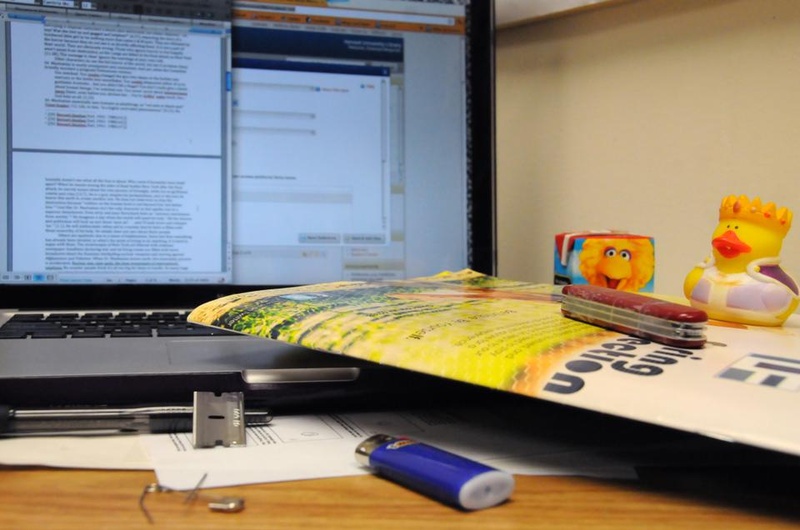When students harm themselves the marks often go unseen, but the percentage of undergraduates who have intentionally injured themselves in their lifetimes is stunning.
More than 15 percent of undergraduates nationwide have harmed themselves and 6.8 percent have done so in the past year, according to a study published in the Journal of American College Health in November.
Harvard’s Director of Behavioral Health and Counseling Paul Barreira said Harvard’s rate is slightly lower than the national average, but he declined to offer a more specific figure. Barreira served as a researcher on the study.
These national statistics are reflected in the lives of three Harvard undergraduates.
Interviews with these students, who have harmed themselves during their time at Harvard—two by cutting and another by inflicting non-scarring injuries—reveal that self-harm is a real phenomenon even within the ivory tower. They say that while Harvard offers a number of ways to seek help—whether professional, student-run, or simply social—often the fear of repercussions and an intense concern for privacy leave them to cope alone.
THE BEGINNINGS OF SELF-HARM
Now a senior in Eliot House, Anna started cutting at 13. She was one of three undergraduates interviewed for the story, all of whom have had their names changed in the story so they could speak comfortably about their experiences.
Anna said she learned about cutting on teen self-help forums.
“I remember thinking, ‘Why would anyone ever start doing that to themselves?’” she said. “But by the time I resorted to trying it, I was thinking that if it worked for somebody else, then it might work for me too.”
At 15, Anna “quit.” During high school, she relapsed occasionally, leaving behind scars on her wrists. In the years before college, she had it under control, she says. But at Harvard, it got worse.
“It was very stressful,” she said. “Not being a top, straight-A student took a toll on me, so back in freshman year, I didn’t hold back.”
Research shows that students harm themselves for a number of reasons. Some use it as a way to cope with negative emotions, others hurt themselves to gain a sense of control, and still others use it as a means of punishing themselves.
“I was always able to feel ... this impulse coming through my arm, but the pulse would stop when I finally did it,” Anna said, referring to her cutting. She says that she cuts as a method of coping. “I would try to postpone, postpone, and postpone, but it’s all I could ever think about.”
Elizabeth, a sophomore, didn’t start cutting until she arrived at Harvard.
“I guess it was a combination of transitioning and stress,” Elizabeth said. “It was something impulsive, to get off frustration. I found it did help, and so it became a habit. It became an addiction.”
Read more in News
Harvard College Administration Quiet on Abe Liu IncidentRecommended Articles
-
Beauty and a French SouffléWhen Count Alexis Vronsky first sees Anna in Anna Karenina, she is scanning the crowd from the doorway of a
-
Clubs ReduxTo the Editors of the Crimson: The Saturday Crimson seldom being delivered to William James Hall subscribers. I have just
-
Ben-Shachar Misreads LibertyTal Ben-Shachar's editorial, "Freedom to Limit Freedom" (Nov. 29), relies on a multitude of factual misrepresentations and dubious assertions in
-
Waltz with DeathBrad Rouse's production of Paula Vogel's The Baltimore Waltz is an AIDS play turned "inside-out." Through the farce-like adventures of
-
At the Park Sq. Cinema Another Look at AnnaHUMILIATION, guilt, psychic imprisonment, schizophrenia, cosmic alienation, cruelty, suicide, cancer of the soul: these are not unlikely concerns for a
-
H.L.U. May Oust Communists By Resolution in MeetingAt a meeting to hear Kenneth T. Young, instructor in Government, speak about "Revolutionary Defeatism and Liberals," a group in














